Single-cell RNA sequencing identifies an Il1rn+/Trem1+ macrophage subpopulation as a cellular target for mitigating the progression of thoracic aortic aneurysm and dissection
- PMID: 35132073
- PMCID: PMC8821555
- DOI: 10.1038/s41421-021-00362-2
Single-cell RNA sequencing identifies an Il1rn+/Trem1+ macrophage subpopulation as a cellular target for mitigating the progression of thoracic aortic aneurysm and dissection
Abstract
Thoracic aortic aneurysm and dissection (TAAD) is a life-threatening condition characterized by medial layer degeneration of the thoracic aorta. A thorough understanding of the regulator changes during pathogenesis is essential for medical therapy development. To delineate the cellular and molecular changes during the development of TAAD, we performed single-cell RNA sequencing of thoracic aortic cells from β-aminopropionitrile-induced TAAD mouse models at three time points that spanned from the early to the advanced stages of the disease. Comparative analyses were performed to delineate the temporal dynamics of changes in cellular composition, lineage-specific regulation, and cell-cell communications. Excessive activation of stress-responsive and Toll-like receptor signaling pathways contributed to the smooth muscle cell senescence at the early stage. Three subpopulations of aortic macrophages were identified, i.e., Lyve1+ resident-like, Cd74high antigen-presenting, and Il1rn+/Trem1+ pro-inflammatory macrophages. In both mice and humans, the pro-inflammatory macrophage subpopulation was found to represent the predominant source of most detrimental molecules. Suppression of macrophage accumulation in the aorta with Ki20227 could significantly decrease the incidence of TAAD and aortic rupture in mice. Targeting the Il1rn+/Trem1+ macrophage subpopulation via blockade of Trem1 using mLR12 could significantly decrease the aortic rupture rate in mice. We present the first comprehensive analysis of the cellular and molecular changes during the development of TAAD at single-cell resolution. Our results highlight the importance of anti-inflammation therapy in TAAD, and pinpoint the macrophage subpopulation as the predominant source of detrimental molecules for TAAD. Targeting the IL1RN+/TREM1+ macrophage subpopulation via blockade of TREM1 may represent a promising medical treatment.
© 2022. The Author(s).
Conflict of interest statement
The authors declare no competing interests.
Figures
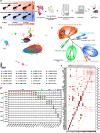
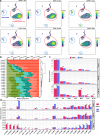
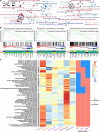
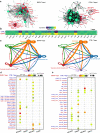
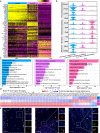
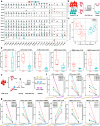
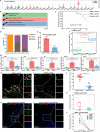
Similar articles
-
Postnatal deficiency of ADAMTS1 ameliorates thoracic aortic aneurysm and dissection in mice.Exp Physiol. 2018 Dec;103(12):1717-1731. doi: 10.1113/EP087018. Epub 2018 Oct 17. Exp Physiol. 2018. PMID: 30191627
-
Angiopoietin-like protein 8 deficiency attenuates thoracic aortic aneurysm/dissection development in β-aminopropionitrile monofumarate-induced model mice.Biochim Biophys Acta Mol Basis Dis. 2023 Feb;1869(2):166619. doi: 10.1016/j.bbadis.2022.166619. Epub 2022 Dec 7. Biochim Biophys Acta Mol Basis Dis. 2023. PMID: 36494038
-
Urate-Lowering Therapy Inhibits Thoracic Aortic Aneurysm and Dissection Formation in Mice.Arterioscler Thromb Vasc Biol. 2023 Jun;43(6):e172-e189. doi: 10.1161/ATVBAHA.122.318788. Epub 2023 Apr 27. Arterioscler Thromb Vasc Biol. 2023. PMID: 37128913
-
Macrophage in Sporadic Thoracic Aortic Aneurysm and Dissection: Potential Therapeutic and Preventing Target.Rev Cardiovasc Med. 2023 Nov 30;24(12):340. doi: 10.31083/j.rcm2412340. eCollection 2023 Dec. Rev Cardiovasc Med. 2023. PMID: 39077089 Free PMC article. Review.
-
Genes Associated with Thoracic Aortic Aneurysm and Dissection: An Update and Clinical Implications.Aorta (Stamford). 2017 Feb 1;5(1):11-20. doi: 10.12945/j.aorta.2017.17.003. eCollection 2017 Feb. Aorta (Stamford). 2017. PMID: 28868310 Free PMC article. Review.
Cited by
-
Tomo-seq identifies NINJ1 as a potential target for anti-inflammatory strategy in thoracic aortic dissection.BMC Med. 2023 Oct 20;21(1):396. doi: 10.1186/s12916-023-03077-1. BMC Med. 2023. PMID: 37858098 Free PMC article.
-
ROS-activated CD147-type I interferon signaling axis drives vascular smooth muscle cell fate transition and abdominal aortic aneurysm progression.Redox Biol. 2025 Jul 22;86:103780. doi: 10.1016/j.redox.2025.103780. Online ahead of print. Redox Biol. 2025. PMID: 40803247 Free PMC article.
-
Unveiling the landscape of cytokine research in glioma immunotherapy: a scientometrics analysis.Front Pharmacol. 2024 Jan 8;14:1333124. doi: 10.3389/fphar.2023.1333124. eCollection 2023. Front Pharmacol. 2024. PMID: 38259287 Free PMC article. Review.
-
The Cdc42/Rac1 pathway: a molecular mechanism behind iron-deficiency-driven aortic medial degeneration.Am J Transl Res. 2024 Aug 15;16(8):3922-3937. doi: 10.62347/YISX1726. eCollection 2024. Am J Transl Res. 2024. PMID: 39262709 Free PMC article.
-
A correlational study of plasma galectin-3 as a potential predictive marker of postoperative delirium in patients with acute aortic dissection.Sci Rep. 2025 May 8;15(1):16022. doi: 10.1038/s41598-025-98858-4. Sci Rep. 2025. PMID: 40341412 Free PMC article.
References
Grants and funding
LinkOut - more resources
Full Text Sources
Miscellaneous

